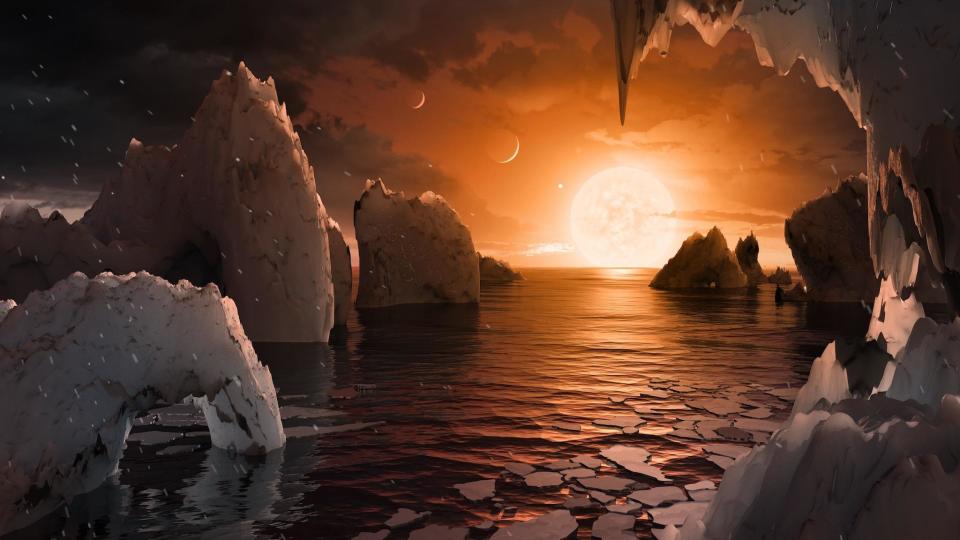Nasa discovers entire new solar system: What could life there look like?
Scientists have found an entire solar system that could support life. And if you actually lived there, "the spectacle would be beautiful", they said.
Researchers revealed that they have made perhaps the most promising exoplanet discovery ever, finding seven planets that are in orbit around a relatively nearby star, TRAPPIST-1. And three of those planets appear to satisfy many of the most important requirements for life – they are not too cold or too warm, are roughly the same size as Earth, and could feature a rocky floor and water.
While not a great deal is known about the planets for now, scientists hope to do extra work to discover what is on them and how they are formed. Doing that could even provide "convincing" evidence of life – if scientists detect certain molecules in the atmosphere, they can be almost sure that aliens can be found there, even though the planets are about 39 light years away and the fact that humans are unlikely to get there any time soon.
With the limited information that is currently available, the researchers and Nasa have put together a vision of what life might look like on those planets, if humans were able to reach them.

In all, there are seven planets, all of them roughly the same size as our own Earth. Each of them moves much closer to its sun – but because their star is much darker,

Scientists say that living on the planets would be a beautiful sight.
If a person on one of the planets, everything would look a lot darker than usual, the scientists said. The amount of light heading to your eye would be about 200 times less than you get from the sun, and would be comparable to what you can see at sunset.
Despite that relative darkness, everything would still feel warm, the researchers said. That’s because roughly the same amount of energy would be coming from the star as warms our Earth – but it does so infrared.
Because the star is so dim in relative terms, all of the planets are warmed enough to sit in the temperate zone. That’s despite the fact that they are all so close to it – each of them sitting nearer to the star than Mercury, the planet in our solar system that orbits closest to the Sun.
“The spectacle would be beautiful,” said Amaury Triaud, one of the scientists involved . “Every now and then you’d see another planet, about as big as another moon in the sky.”
The sun would also look about 10 times bigger than our own does from Earth, Dr Triaud said. And it would be a sort of salmon pink, said Dr Triaud, who noted that the scientists initially thought it would be a deep reddish crimson but most of that red light would be infrared and so invisible.
It’s unlikely that any possible life that is on the planet would actually see this way, the scientists noted, since they would probably have evolved entirely different eyes – or perhaps none at all.

 Yahoo News
Yahoo News 
